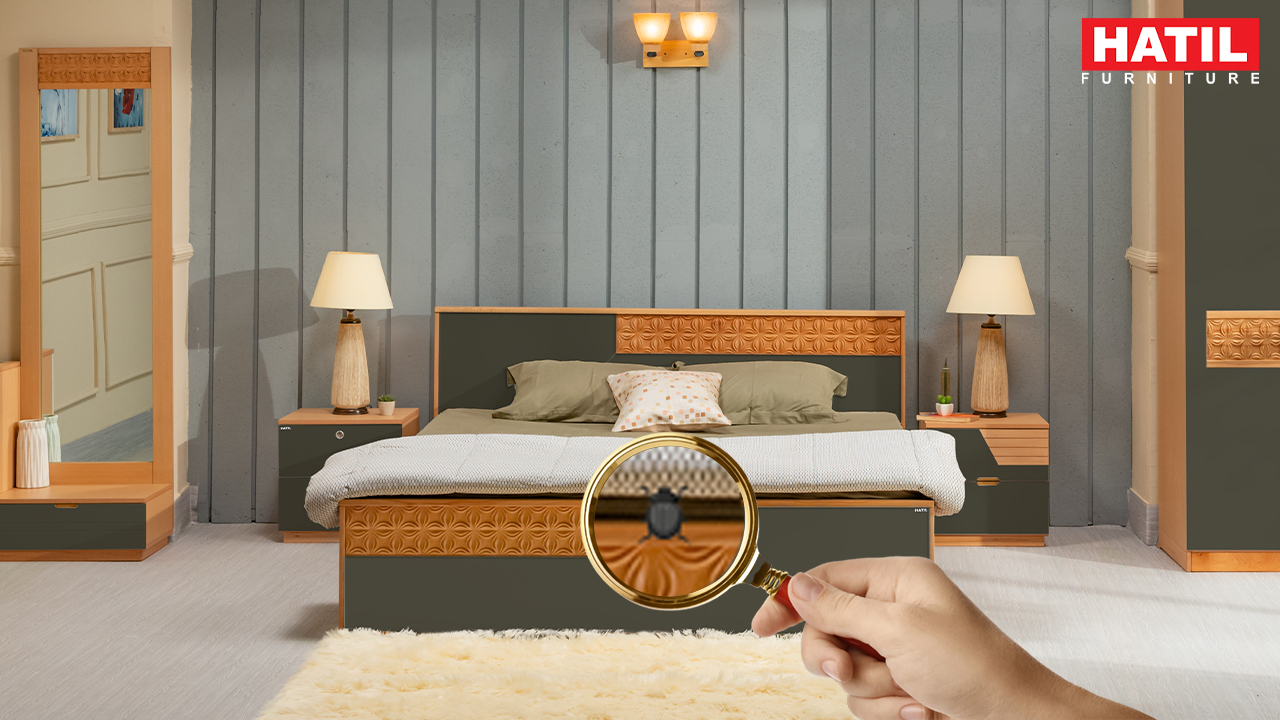Most of us have painful memories of those nasty little bed bug bites. Well, bed bugs are an unwelcome visitors that can leave your skin crawling. One of those creepy crawly is called the mite, which is smaller than a cockroach. These tiny pests love living with humans and can bite people of all ages, leaving irritation and discomfort behind.
But mites aren’t the only insects that have made themselves at home in our beds. There are a handful of other little bugs that have rightfully earned the name “bed bugs” due to their tendency to snuggle up in our sheets. An infestation of these critters can cause all kinds of problems, from itchy rashes and annoying allergies to more serious skin diseases.
So how do we give these uninvited guests the boot? Well, today we’re going to learn all about the different species of bed bugs and figure out the best ways to banish them from our bedrooms once and for all. With the right techniques, we can kick these insects to the curb and keep our homes healthy and pest-free. The time has come to declare war on bed bugs! Who’s with me?
What is Bed Bug?
Imagine settling into bed, ready for a peaceful night’s sleep. As you drift off, tiny reddish-brown insects creep out from hiding, aiming their needle-like mouths at any exposed skin they can find. These minuscule vampires, measuring only 1 to 5 millimeters long, are bed bugs – aptly named for their tendency to feast on sleeping humans and animals.
During the day, these parasitic pests of the Cimicidae family conceal themselves in the cracks and crevices of mattresses, bed frames, furniture, and even toys. Their flattened bodies allow them to squeeze into the smallest spaces, evading detection. At night, they emerge to dine on an unsuspecting victim’s blood, leaving behind itchy, irritating welts.
While bed bugs are found worldwide, tropical climates provide ideal conditions for these subtropical insects. Similar to fleas and lice, bed bugs thrive in warm, humid environments. And once an infestation takes hold, they can be incredibly difficult to eradicate. Their tiny size enables them to hide in the tiniest cracks and evade most do-it-yourself treatments. Like stealthy little vampires, bed bugs sneak out under the cover of darkness, feeding on humans night after night. Getting rid of them often requires professional pest control to seek out and eliminate every last one of these blood-thirsty home invaders.
How Does its Infection Occur?
Bed bugs follow people’s daily activities in search of food and try to settle in areas where they can invade your body and suck blood. The places where these insects can attack your home are:
- Dirty and wet laundry – If you leave your dirty clothes where you used to be and pile up wet towels from the shower, this can be a breeding ground for bugs.
- Second Hand Furniture – Buying second hand furniture can infest your home with this pest.
- Travel – If you travel far away and stay overnight, if the place is infested, it can travel to your home in your luggage and on your body.
- Dirty environment – Unhygienic lifestyle is also more attracted to this type of insect.
- Warm places – Bed bugs have a special attraction to warm places. For this reason, they are often found in sofa beds and other comfortable places.
How To Get Rid Of Bed Bugs?
If you notice that your bed or sofa is infested with these insects, you should kill them as soon as possible. Because they can propagate very quickly and the damage they cause can be very risky.
Preparation
To effectively eliminate bed bugs from your home, there are some additional preparations you should make. First, thoroughly clean or discard any infested items in the house. This includes bedding, furniture, clothing, etc. that the bugs may be hiding in. Next, seal up any cracks or crevices in the floors or walls using caulk or plaster. These gaps provide perfect spots for bed bugs to nest. With these preparatory steps complete, you can then implement primary bed bug removal methods like chemical treatments or heat. Taking the time to properly prep your home will improve the success of your bed bug elimination efforts. By cleaning infested items and sealing hiding spots, you remove their food sources, shelter, and ability to spread. With this comprehensive approach, you’ll be on your way to kicking bed bugs out of your house for good.

Exterminating Bed Bugs
Permanently eliminating bed bugs requires an integrated pest management approach utilizing multiple techniques:
- Cleaning – Thoroughly wash all bedding, curtains, and clothing in hot water above 120°F and vacuum mattresses, box springs, and surrounding areas to kill bed bugs and eggs.
- Heat Treatment – Use a heater or steamer to raise infested areas to lethal temperatures above 140°F for at least 30 minutes. High heat kills all stages of bed bugs.
- Insecticide Application – Carefully apply EPA-registered bed bug pesticides such as diatomaceous earth or borax according to label directions in cracks, crevices, and harborage areas.
- Monitoring – Regularly inspect your home for signs of bed bugs, molted skins, fecal stains, etc. Take prompt action if bed bugs are detected.
- Prevention – Avoid bringing bed bugs in by inspecting secondhand furniture, luggage, and clothing after traveling. Isolate and inspect purchases.
Following integrated pest management best practices and utilizing multiple chemical, mechanical, and physical control methods will provide maximum effectiveness against bed bug infestations.
Quick Remedy For Bed Bugs
If you find that bed bugs have infested your bed, immediate and thorough action is required. First, strip the bed completely – remove all sheets, pillowcases, and pillow covers. These items should be washed in hot water above 120°F and then dried on high heat to kill bugs and eggs hiding in the fabric.
Next, take the mattress and pillows outside and place them in direct sunlight for several hours. The ultraviolet rays in sunlight will kill bed bugs. If bringing items outside is not feasible, use a heater or hair dryer to raise the temperature of the mattress and pillows higher than 140°F to exterminate the bugs. You may also consider applying an EPA-registered bed bug pesticide onto the mattress, following label directions closely.
After heating, thoroughly scrub the mattress and pillows with a stiff brush to dislodge any remaining bed bugs from crevices and tufts. Then, vacuum the bed frame, box spring, mattress, headboard, footboard, and pillows. Use the brush attachment to vacuum all cracks and crevices. Dispose of the used vacuum bag by sealing it tightly in a plastic bag and discarding outside.
Finally, encase the mattress and box spring in bed bug proof covers that will trap any surviving bugs and prevent future infestations. Be vigilant and continue monitoring for signs of bed bugs, repeating treatment if necessary. Taking prompt, thorough action at the first signs of an infestation is key to eliminating bed bugs.
Take Help From Professional
If you are unable to eliminate bed bugs on your own, contact professional pest control services. Pest control companies have training in the proper use and application of chemical treatments that homeowners do not. As such, they are the safest and most effective option for bed bug removal. Pest control professionals also have specialized equipment to perform whole-home heat treatments, raising interior temperatures high enough (135-145°F) to kill all stages of bed bugs.
Before bringing in professional help, prepare your home as mentioned previously—seal cracks and crevices, dispose of infested items, etc. Carefully follow all instructions provided by the pest control technician. With professional-grade products and proper application, they can efficiently eliminate bed bug infestations. Combining pest control services with thorough pre-treatment preparations will help ensure bed bugs are eradicated from your home successfully.
Wrapping Up
The wellbeing of your physical and mental health largely depends on a good night’s sleep. Bed bugs can cause a variety of health problems such as discomfort, itching, so getting rid of them is important to maintain a healthy sleeping environment. Although high quality mattresses are not easily infested with these insects, it is still possible to keep your bed free of bed bugs by following the above tips.





